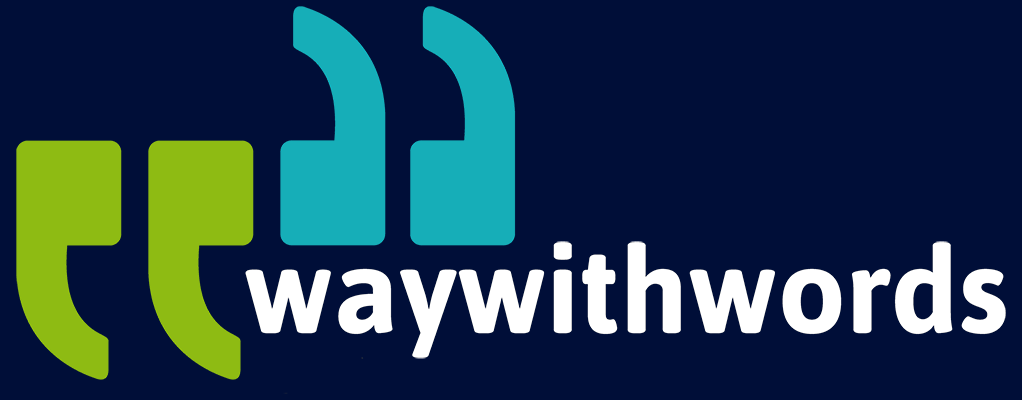What Makes a Speech Dataset Balanced?
What Does it Mean for a Speech Dataset to be Balanced?
The quality of your training data is as important as the algorithms you apply. Nowhere is this more evident than in speech technologies, where the underlying datasets used to train automatic speech recognition (ASR) and text-to-speech (TTS) models significantly influence their accuracy, reliability, and inclusivity. One of the most vital aspects of dataset integrity is balance. But what does it mean for a speech dataset to be “balanced,” and why should engineers, researchers, and developers care?
This article explores the concept of a balanced speech dataset, delving into how dataset fairness is achieved, why it matters, and how professionals can evaluate and improve the speech corpus design they rely on.
Defining Balance in Speech Corpora
A balanced speech dataset refers to a curated collection of audio samples that fairly and evenly represents a broad range of linguistic and demographic variables. This means that across various segments of the dataset, there should be no overwhelming skew in favour of one particular speaker type, dialect, recording condition, or topic.
Achieving balance requires careful consideration across several core dimensions:
- Gender: Ensuring equal or proportional representation of male, female, and non-binary voices. Many legacy corpora are heavily skewed towards male voices, especially in business and technical domains.
- Age: Age variation influences pitch, pronunciation, and articulation. Including voices across age groups—from children to elderly speakers—adds robustness to models, particularly in accessibility applications.
- Dialect and Accent: Speech varies greatly across regions, even within the same language. A balanced dataset should include a diversity of dialects and accents to ensure models don’t disproportionately favour standardised or prestige variants.
- Audio Environment: Variability in background noise, reverberation, and recording setting (quiet studio vs. bustling street) plays a role in real-world usability. Balanced datasets span clean and noisy conditions to build resilience in deployment environments.
- Topic Diversity: If all conversations in a dataset revolve around a few topics (e.g. sports or technology), the model may underperform on other themes like medicine, education, or politics. A speech corpus should span multiple domains.
- Recording Devices: Smartphones, headsets, landlines, and professional microphones all capture speech differently. A speech corpus design must account for this by mixing recording hardware types.
Balance, in this context, is not necessarily about equal representation of every group or variable, but rather proportional representation based on the intended use of the model and real-world deployment scenarios. If you’re designing a model for use in sub-Saharan Africa, for example, your corpus should reflect the linguistic diversity, age distribution, and common recording scenarios in that region.
Without such balance, models risk developing an unintentional bias, which brings us to the next critical topic.
Why Balance Matters in Model Accuracy
In AI, garbage in, garbage out still holds true. When a speech dataset is unbalanced, it skews how a model learns to understand and generate language, often leading to bias in speech recognition or synthesis systems.
An imbalanced speech dataset tends to overfit on dominant speaker profiles while underperforming or outright failing on underrepresented groups. The consequences of this are both technical and ethical.
Technical Implications:
- Reduced Accuracy: A speech recognition system trained predominantly on adult male voices will misinterpret or fail to recognise female or child speakers.
- Poor Generalisability: If most samples come from studio environments, the model may perform poorly in real-world settings like customer support centres or outdoor usage.
- Instability in Deployment: Without exposure to varied dialects or devices, systems break under less controlled conditions.
Ethical and Social Implications:
- Exclusion: Marginalised groups may be systematically ignored or misrepresented in technology, reinforcing existing inequalities.
- Bias Propagation: Models deployed in services like banking, healthcare, or law enforcement can inadvertently discriminate against certain populations.
- Loss of Trust: Users quickly lose faith in systems that don’t understand them, especially when the failures reflect deeper issues of cultural or regional underrepresentation.
Case studies from tech giants have shown that unbalanced data has led to public backlash and product recalls. Speech technologies, particularly in customer-facing roles, must reflect the diversity of the audiences they serve. A well-balanced dataset helps achieve both ethical alignment and practical reliability.
Metrics for Evaluating Dataset Balance
Recognising imbalance is one thing; measuring and documenting it is another. To build or audit a speech dataset effectively, professionals need reliable metrics for evaluating dataset balance. These metrics serve as the foundation for dataset transparency, reproducibility, and model performance diagnostics.
Here are some practical methods for auditing speech corpora:
- Speaker Distribution Tables:
These tables outline the number of unique speakers categorised by attributes such as gender, age group, dialect, and region. A quick visual inspection can reveal over- or under-represented categories. - Acoustic Coverage Maps:
These visualisations illustrate the distribution of recording environments across samples, such as reverberant vs. anechoic spaces or low-noise vs. high-noise scenarios. Tools like spectrogram density maps also show coverage across frequency and amplitude bands. - Statistical Sampling Analysis:
By comparing randomised subsets of data, teams can assess if all speaker and topic categories maintain proportional representation. Chi-square tests or Gini coefficients can indicate whether sample distributions are skewed. - Transcription Metadata Audits:
If transcription is part of the dataset, metadata (e.g. speaking rate, word error rate per speaker category) can reveal hidden disparities. Higher error rates in certain dialects may point to imbalance in linguistic features. - Device Diversity Logs:
Tracking the source of recordings (e.g. Android vs. iPhone, headset vs. laptop mic) ensures that the dataset doesn’t overly depend on a narrow device range. This is especially important when models are meant for mobile or edge deployment. - Lexical Diversity Scores:
These assess how many unique words or expressions appear across topics and speakers. Low lexical variation can indicate over-reliance on scripted or repetitive content.
Auditing tools like these not only reveal imbalance but also guide strategic interventions to fill gaps in the corpus.

Strategies for Creating Balanced Speech Data
Knowing that balance matters, the next challenge is how to create a balanced speech dataset in practice. For teams building their own corpus or augmenting existing ones, several strategies can be used to ensure diversity and fairness.
1. Targeted Recruitment
Develop a comprehensive speaker recruitment plan that includes:
- Clear demographic goals based on model use cases.
- Outreach to underrepresented communities via local partnerships, community leaders, or NGOs.
- Incentivised participation to ensure balanced enrolment across socioeconomic groups.
2. Oversampling Underrepresented Groups
If your dataset already has dominant categories, you can:
- Recruit additional speakers from underrepresented categories to boost parity.
- Use audio augmentation techniques (e.g. pitch shifting, background noise insertion) to synthetically expand minority classes while maintaining linguistic realism.
3. Synthetic Data as a Temporary Stopgap
When real recordings are difficult to collect, synthetic voice generation (via TTS or voice conversion) can temporarily fill demographic or dialect gaps. However, synthetic data should never replace authentic voices—it should only be used to support the eventual goal of real-world coverage.
4. Balanced Prompt Design
Ensure that recording scripts or prompts reflect various linguistic registers, topics, and vocabulary sets. Include domain-specific terminology, common phrases, and multilingual variations if required.
5. Multi-Environment Recordings
Encourage or simulate recordings across environments—indoors, outdoors, in transit, and more. If recordings are crowdsourced, instruct participants to record in different spaces using different devices.
6. Continuous Dataset Evaluation
Balance is not a one-off activity. Establish a quality assurance loop where new data batches are routinely checked for demographic and acoustic parity.
7. Ethical Oversight
Involve ethical review boards or third-party audits to ensure the recruitment process respects privacy, consent, and fair compensation practices.
These strategies help build speech corpora that not only serve high-performance models but also support equitable technology outcomes.
Examples of Balanced Datasets in Use
Several large-scale open datasets serve as useful examples of balanced datasets that have made significant strides toward inclusivity and fairness.
1. Mozilla Common Voice
Common Voice is one of the most diverse public datasets available today, offering speech samples in 100+ languages. Mozilla’s commitment to dialectal, gender, and age diversity is evident in their open contributor model, where volunteers self-identify their attributes. Notably:
- Contributions come from a global user base.
- Metadata includes speaker demographics and device types.
- Frequent updates improve balance with each release.
2. LibriSpeech
Built from audiobooks sourced from the LibriVox project, LibriSpeech provides a large volume of high-quality English recordings. While initially skewed toward American English and professional narrators, recent derivative projects have sought to address accent diversity by incorporating regional and amateur voices.
3. VoxForge
This open-source project allows contributors to upload speech samples in multiple languages. While smaller in scope than Common Voice, its strength lies in user-contributed transcription and metadata, which help promote dialectal balance.
4. African Voice Datasets (Local Initiatives)
Emerging projects in Africa are designing corpora that reflect linguistic realities in underrepresented regions. These datasets focus on local dialects, code-switching patterns, and low-resource languages such as isiZulu, Hausa, or Swahili. Some initiatives also include environmental recordings from urban and rural settings.
5. Industry Datasets with Balanced Protocols
Major speech tech companies like Google and Microsoft are now investing in balanced datasets for internal ASR/TTS training. Although these corpora are not always publicly released, their methodology often includes:
- Equal representation across regions.
- Stratified speaker sampling.
- Dynamic rebalancing during training epochs.
By studying and building upon these examples, speech data practitioners can better craft balanced corpora suited to their own operational needs.
Key Conclusion on Balanced Speech Datasets
In the design of speech technologies, data is not just a foundation—it’s a blueprint. If the data is flawed, the model inherits that flaw. A balanced speech dataset is key to achieving dataset fairness, ethical integrity, and practical reliability in ASR and TTS applications. From dialect to device, every variable contributes to how well a model performs across diverse users and use cases.
For teams tasked with building or evaluating speech corpora, balance should not be an afterthought but a central pillar in the design process. Through targeted recruitment, consistent auditing, and drawing inspiration from public datasets, it’s possible to create voice technologies that serve all, not just a few.
Resources and Links
Sampling Bias – Wikipedia: Explains how bias introduced in data collection or sampling can distort conclusions and model outputs.
Way With Words – Speech Collection Services: Way With Words excels in real-time speech data processing, leveraging advanced technologies for immediate data analysis and response. Their solutions support critical applications across industries, ensuring real-time decision-making and operational efficiency.
